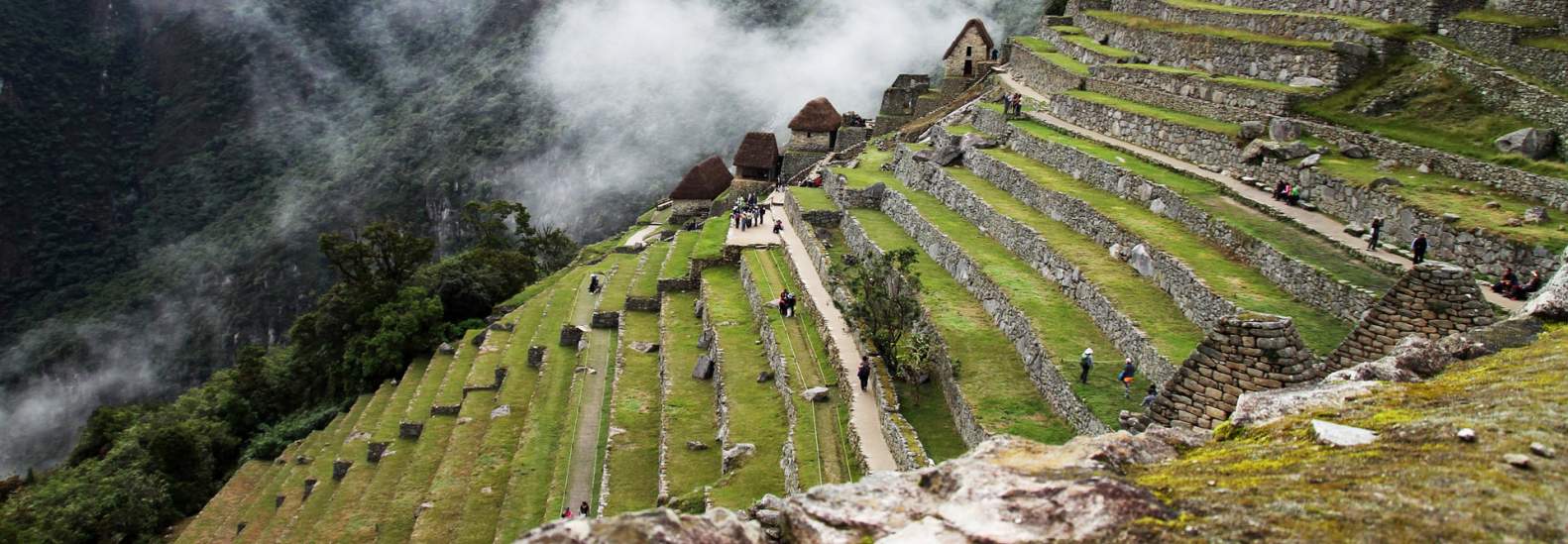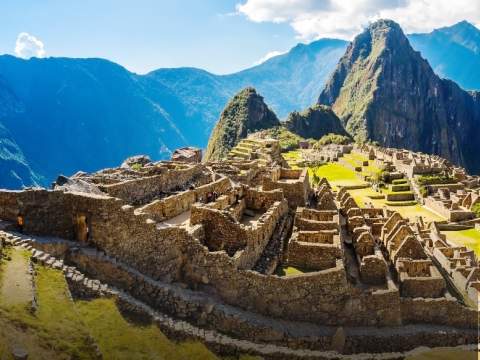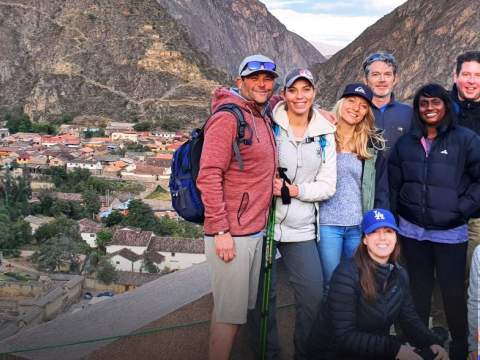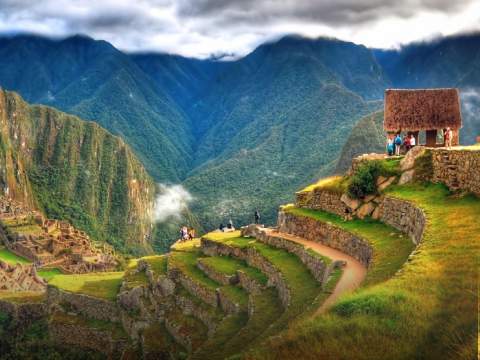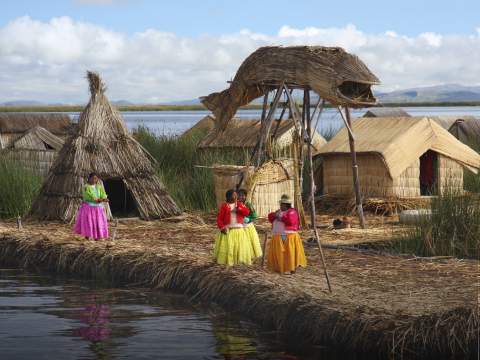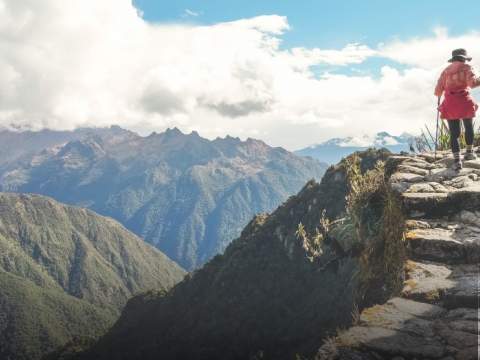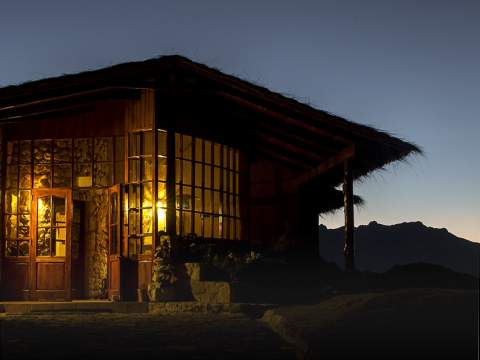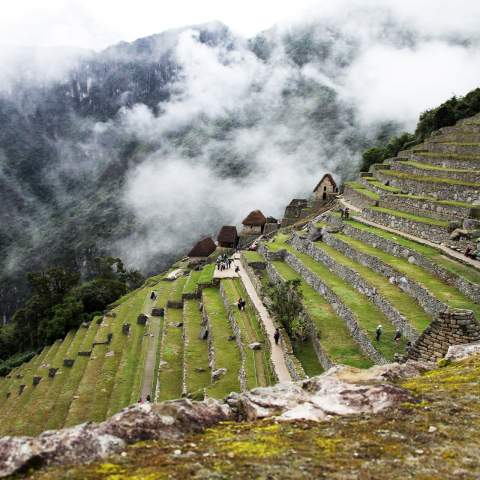Plan the trip of a lifetime on the Inca Trail with our well-traveled team of experts. Work closely with your Southern Explorations' travel specialist to build a first class tailor-made tour over the dates of your choice. There’s no better way to grasp the brilliance of the Incan Empire then hiking the Inca Trail. This legendary stretch from the Sacred Valley to Machu Picchu is dotted with ruins serving as testaments to the Incan people’s mettle as craftsmen, engineers, hydrologists, military strategists and master administrative organizers.
We invite you to view our sample itineraries below, but looking to customize your travel? It's easy! Give us a call today at 206-784-8111.
Plan Your Custom Inca Trail Trip today!
What people mean when they refer to the Inca Trail is its most famous segment, the one that leads to Machu Picchu. It is just one of many paved roads the Incas built, linking most of Peru, and parts of Bolivia, Ecuador, Argentina and Chile. From its supposed origins at Lake Titicaca on the altiplano between Peru and Bolivia, the Inca civilization spread its influence by force, manipulation or negotiation. Usurping other indigenous tribes as they went, the Incas built what eventually became the largest empire in the Americas with a population of perhaps twelve million.
REVEALING RUINS
Though mostly only ruins remain, anyone who takes an Inca Trail tour today can readily see that the Incas were craftsmen, engineers, hydrologists, military strategists and administrative organizers. They mined silver and gold to adorn their buildings and themselves; built massive edifices, 10,000 miles of highway and a multitude of bridges; designed elaborate waterways; and devised ways to grow crops at high-elevations. For the better part of three centuries, the Incas successfully held together their disparate following.
HIKING THE INCA TRAIL
Most people begin their travel to Machu Picchu seventy miles to the west in Cusco, a fascinating city in its own right and surrounded by major Inca ruins. These include the massive temple fortress above the city, Sacsayhuaman, built with rocks from quarries many miles away, dragged into place and assembled without mortar, an engineering marvel among marvels. Once the center of the Inca Empire, Cusco then became the center of colonial Peru, a melding of cultures that may be seen today. The word, Cusco, in Quechua, the language of the Incas, is Qosqo, meaning navel or vital center. According to legend, Qosqo was the promise land, settled by the first Inca king, Manco Capac, after leaving his birthplace in Lake Titicaca. Roads from the four corners of the empire once converged on Qosqo. Spanish chroniclers wrote that Qosqo was a magnificent city of stone plazas, temples and palaces lavishly decorated with gold. Only royalty lived in the inner city that was laid out in the shape of a crouching puma with Sacsayhuaman as its head, the Temple of the Sun and its Coriancha as the heart, and a public garden bordered by the Huatanay and Tullumayo rivers marking the puma's tail. Called the city of stairways, Cusco is also a jewel of colonial architecture.
Incan ruins extend from Cusco to Machu Picchu through the 62-mile long Sacred Valley that many travel by car, trail, bicycle or bus. As for hiking the Inca Trail to Machu Picchu, travelers have a choice of where to start. Km82 is a popular spot, giving hikers a four-day trek, but many choose the shorter km88, or shorter still, the km104 Inca Trail trek of a little under nine miles. Longer treks link up with the Inca Trail part way. By government regulation, no more than 500 visitors, porters and guides may hike the Inca Trail each day.
What took 300 years to build, took only a few months to dismantle. Outsmarted by fewer than 200 Spanish conquistadors who tricked and then executed the Incas’ leader, the reign was over, though a few pockets of resistance fought on for another four decades. The Incas’ legacy lives on in Peruvian culture today as a symbol of national pride, in the economy of fine woven products and indigenous markets, in the Quechua language spoken in many villages, the festivals, most notably, Inti Raymi, and even in the fusion cuisine that has turned Peru into a foodie destination of late.
